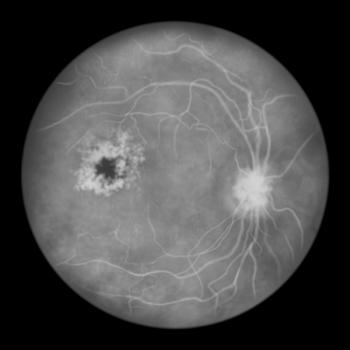
Researchers Find Shared Multiomic Molecular Dysregulations in Brains With PTSD and MDD
The investigators are optimistic that the data can establish stress-related pathways while revealing potential therapeutic options for patients with major depressive disorder and post-traumatic stress disorder.
Results from a study published in Science found both shared and distinct molecular changes across brain regions, genomic layers, cell types, and blood in patients with post-traumatic stress disorder (PTSD) and major depressive disorder (MDD). A comprehensive approach was used to examine intersections of multiple biological processes to define the development of stress-related disorders.1
Prior research found hormonal, immune, methylomic (epigenetics), and transcriptomic (RNA) factors, mostly in peripheral samples, that contribute to these diseases. However, limited access to postmortem brain tissues from patients with PTSD restricted the characterization of brain-based molecular changes at the appropriate scale. The investigators note that disorders related to stress develop over time, stemming from epigenetic modifications resulting from the association between genetic susceptibility and exposure to traumatic stress.1
“PTSD is a complex pathological condition. We had to extract information across multiple brain regions and molecular processes to capture the biological networks at play,” said first author Nikolaos P. Daskalakis, MD, PhD, director of the Neurogenomics and Translational Bioinformatics Laboratory at McLean Hospital, and associate professor of psychiatry at Harvard Medical School, in a news release.1
For this study, the investigators created a brain multiregion, multiomic database consisting of 231 patients with PTSD and MDD and neurotypical controls (NCs)—with 77 patients in each group—to describe molecular alterations against 3 different regions of the brain: the central nucleus of the amygdala (CeA), medial prefrontal cortex (mPFC), and the hippocampal dentate gyrus (DG) at the transcriptomic, methylomic, and proteomic levels. The investigators hypothesized that by using this multiomic strategy would merge information across all biological layers and organizational strata while supporting it with single-nucleus RNA sequencing, genetics, and blood plasma proteomics analyses, therefore, revealing an integrated systems perspective of PTSD and MDD in patients.2
“We essentially combined circuit biology with powerful multiomics tools to delve into the molecular pathology behind these disorders,” explained senior author Kerry Ressler, MD, PhD, chief scientific officer and director of Division of Depression and Anxiety Disorders and Neurobiology of Fear Laboratory at McLean Hospital, and professor of psychiatry at Harvard Medical School, in the news release.1
The authors noted observing differences mostly in the mPFC, as well as differentially expressed genes and exons that carried the most disease signals; however, the authors noted that altered methylation was primarily observed in the DG of patients with PTSD, in contrast their MDD counterparts, which was notable in the CeA. The investigators also found an overlap between PTSD and MDD, with childhood trauma and suicide being the primary drivers of molecular variations in the 2 disorders. Sex specificity was more notable in MDD, according to the authors.2
Further, pathway analyses had linked disease-associated molecular signatures to immune mechanisms, metabolism, mitochondria function, neuronal or synaptic regulation, as well as stress hormone signaling that had low concordance across omics. The notable upstream regulators and transcription factors that were observed include IL1B, GR, STAT3, and TNF. Both multiomic factor and gene network analyses also provided that latent factors and modules related to aging, inflammation, vascular processes, and stress may be part of the underlying genomic structure of PTSD and MDD.2
“Understanding why some people develop PTSD and depression and others don’t is a major challenge,” said investigator Charles B. Nemeroff, MD, PhD, chair of the Department of Psychiatry and Behavioral Sciences at Dell Medical School of UT Austin, in the news release. “We found that the brains of people with these disorders have molecular differences, especially in the prefrontal cortex. These changes seem to affect things like our immune system, how our nerves work, and even how our stress hormones behave.”1
The investigators note that prioritized genes with multiregion, multiomic, or multitrait disease associations were members of pathways or networks, demonstrated specificity to cell types, had blood biomarker potential, or were involved in genetic risk for both PTSD and MDD. Limitations of the study include biases in postmortem brain research (eg, population selection, clinical assessment, comorbidities, and end-of-life state), and the incomplete characterization of all cell-subtypes and states which will require future research to understand the contrasting molecular signals across brain regions. The authors note that the database can serve as a foundation for future analyses and research on how genetic factors may interact with environmental variables.1,2
“Learning more about the molecular basis of these conditions, PTSD and MDD, in the brain paves the way for discoveries that will lead to more effective therapeutic and diagnostic tools. This work was possible because of the brain donations to the Lieber Institute Brain Repository from families whose loved ones died of these conditions,” said Joel Kleinman, MD, PhD, associate director of Clinical Sciences at the Lieber Institute for Brain Development, in the news release. “We hope our research will 1 day bring relief to individuals who struggle with these disorders and their loved ones.”1
References
1. McLean Hospital. Researchers unveil shared and unique brain molecular dysregulations in PTSD and depression. News release. May 23, 2024. Accessed June 4, 2024. https://www.eurekalert.org/news-releases/1045296
2. Daskalakis N, Iatrou, A, Chatzinakos, C. et al. Systems biology dissection of PTSD and MDD across brain regions, cell types, and blood. Science. 384,eadh3707(2024). doi:10.1126/science.adh3707
Newsletter
Stay informed on drug updates, treatment guidelines, and pharmacy practice trends—subscribe to Pharmacy Times for weekly clinical insights.


























































































































































































































